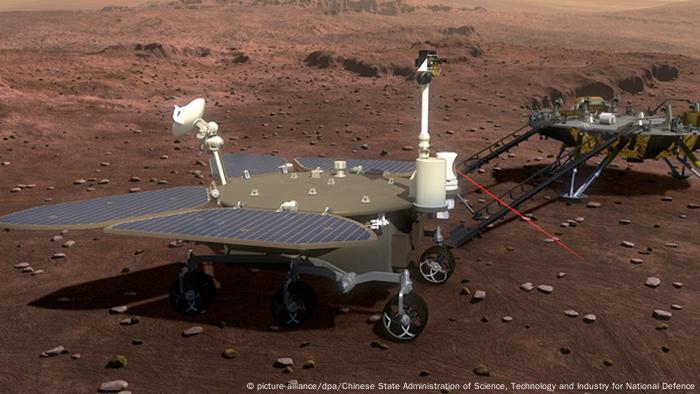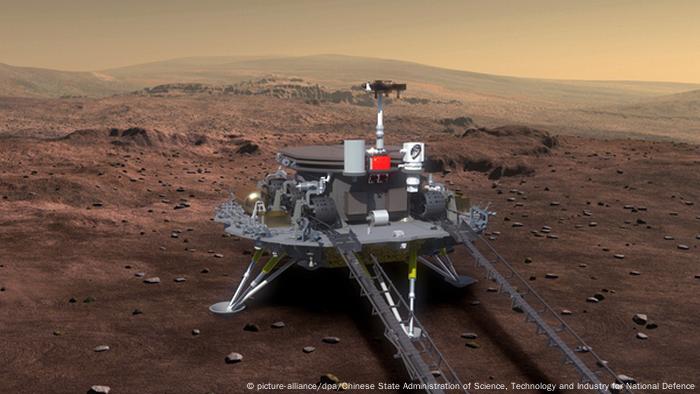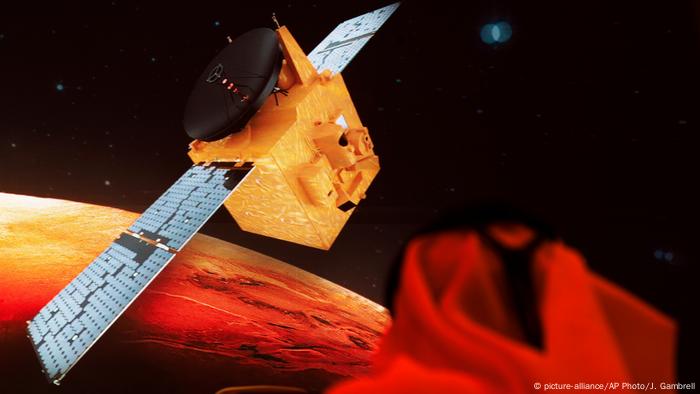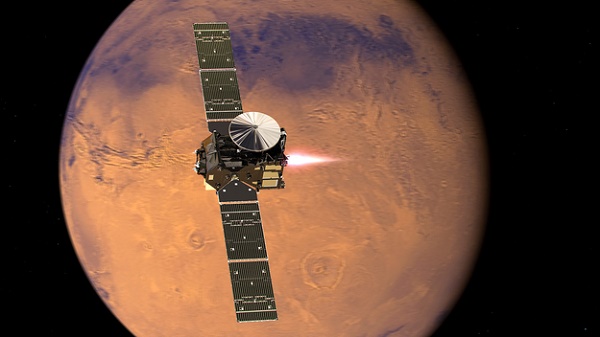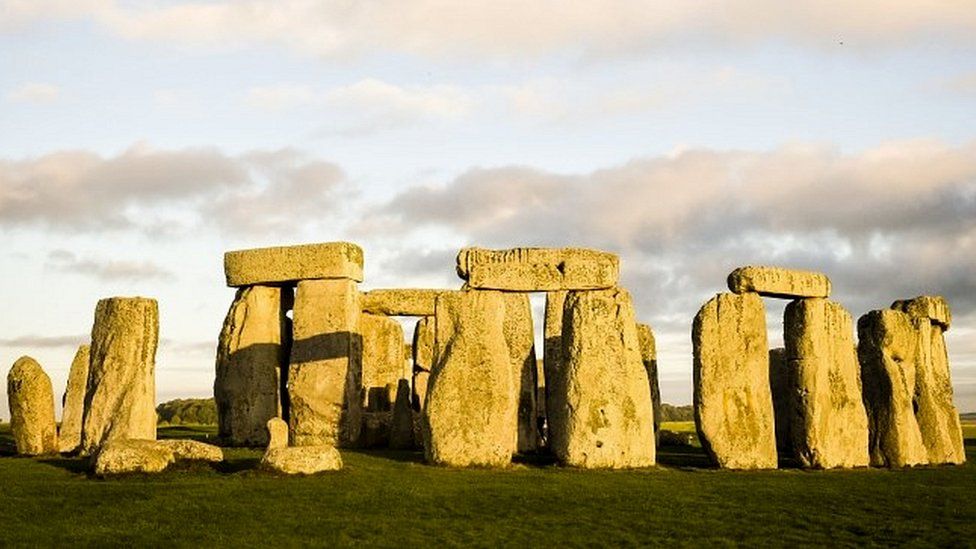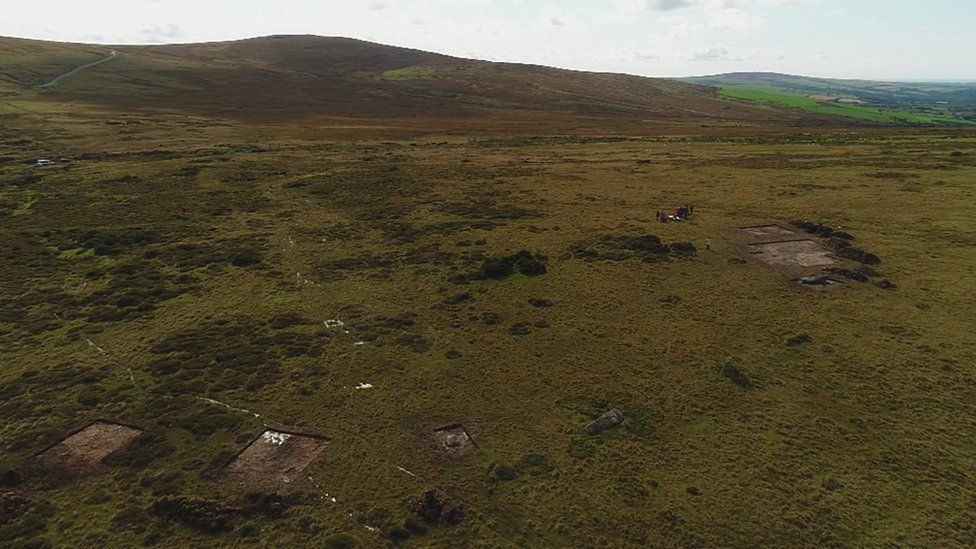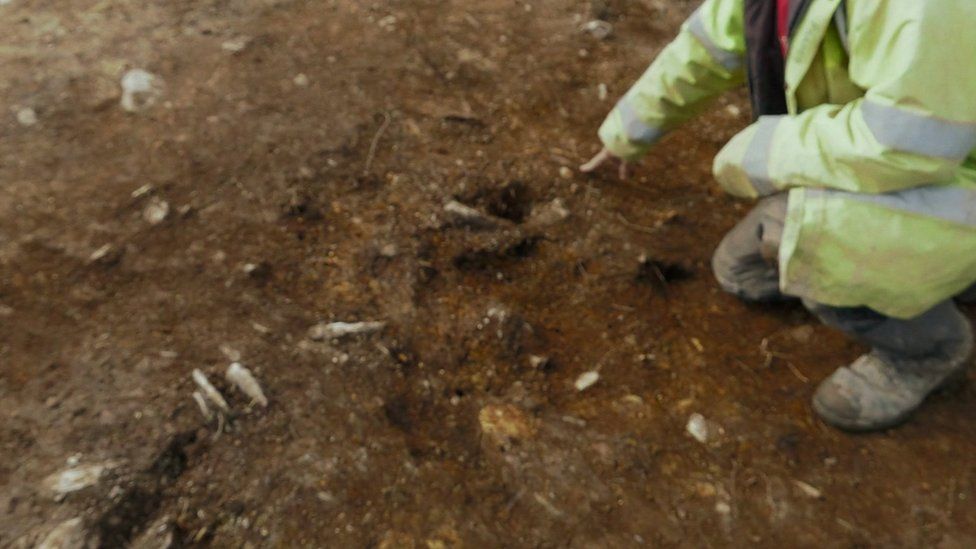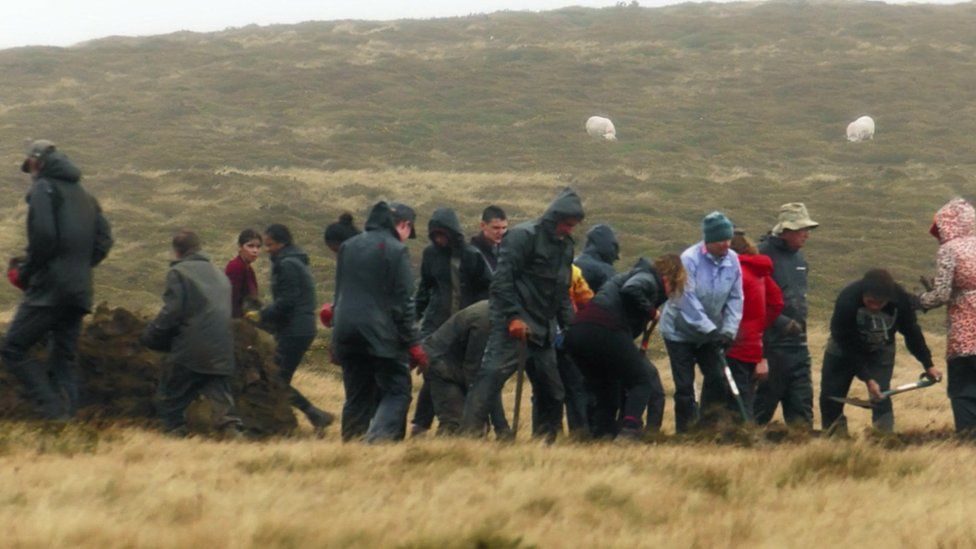CHLORINE AND WATER ARE IN THE AIR IN MARTIAN SUMMERTIME
Two studies of the Martian atmosphere are changing the way we think about its current climate and its ancient
An artist's concept of the ExoMars Trace Gas Orbiter
firing its main engines.
ESA / ATG-Media Lab
A pair of investigations using data from the ExoMars Trace Gas Orbiter (TGO, a joint European Space Agency and Roscosmos mission) are adding to our understanding of the interactions between the Red Planet’s surface and atmosphere.
The first study concerns the detection of hydrogen chloride (HCl) gas, whose origins are still unknown. On Earth, this molecule is derived mainly from seawater. Finding it on Mars has been one of the longstanding goals of the TGO science team, because it can also be a sign of geological activity.
The second study identifies rapid variability in the ratio of variants of hydrogen atoms at different altitudes, providing new insights into how much water has been lost to space over time, and how this changes across the planet depending on climate, geography, and reservoirs (like the poles and the water found in the regolith).
Both studies, published in the February 10th Science Advances, found seasonal variations in their detections, providing a fuller picture of both the current climate in the planet’s southern hemisphere and the evolution of the Martian environment over time.
FOLLOW THE WATER — AND THE SALT
The water team, led by Geronimo Villanueva (NASA Goddard), used infrared spectroscopy to map out the abundance of water, water-based ice, and dust both across the surface and upwards, through the atmosphere.
The scientists kept an eye in particular on the ratio of deuterium — a heavier form of hydrogen with an extra neutron — to regular hydrogen, which contains only a proton in its nucleus. Measuring the deuterium-to-hydrogen ratio (D/H) on Mars helps estimate how much water the planet used to have, but we can’t get a good global average until we know how much it actually varies by place and time
.
These videos from the Mars Color Imager camera onboard
NASA's Mars Reconnaissance Orbiter show how dust enveloped
the planet during the summer of 2018.
NASA / JPL-Caltech / MSSS
As Villanueva and his colleagues observed major weather events — including a global dust storm, an intense local storm, and the seasonal migration of water from the ice cap in the southern summer as it thawed — they watched the D/H ratio vary significantly from latitude to latitude.
High up they also saw lots of deuterium, hinting that lighter hydrogen might escape more easily. This finding supports previous detections of high D/H ratios compared to Earth, one of the reasons people think Mars used to be much wetter.
They also saw D/H spikes during the summer, which would make sense if deuterium captured in the polar ice caps were released as they melted — it could then be lofted up into the atmosphere during the seasonal storms.
“When water is exposed to the upper atmosphere and to space, some is lost, some is changed,” Villaneuva explains. “The ratio of regular water to heavy water in the atmosphere is interesting to us, because it can tell us a bit of a planet’s history.”
The team studying hydrogen chloride, led by Oleg Korablev (Space Research Institute, Russia), also used spectroscopy to find hydrogen chloride gas. Hydrogen chloride had been predicted on Mars, but never seen before. Villanueva’s team corroborated these observations during the aforementioned global dust storm, during which the scientists verified the gas’s presence while taking the water ratio measurements.
The exact process that creates hydrogen chloride is unknown. One mechanism could be surface dust that’s rich in chloride minerals, like salt (NaCl), interacting with water. But volcanic activity could also make the gas
.
This graphic describes a possible new chemistry cycle on Mars
following the discovery of hydrogen chloride in the Martian
atmosphere by the ExoMars Trace Gas Orbiter.
ESA
CHEMISTRY IS HISTORY
NASA’s Phoenix lander revealed perchlorates, a chlorine-based salt, in the Martian regolith a decade ago, and the discovery of hydrogen chloride could explain where all those salts came from.
“One of the leading theories is that ancient Mars had lots of active volcanoes releasing hydrogen chloride into the atmosphere,” Kevin Olsen (Oxford University, UK) explains. “We are seeing a seasonal creation of hydrogen chloride from the surface chlorine, which has implications about the whole cycle.”
David Catling (University of Washington), who was involved with the original detection of perchlorates, agrees: “I would speculate that perchlorate might be generated continually from the hydrogen chloride, and that we don’t need to invoke past volcanic sources of chlorine.”
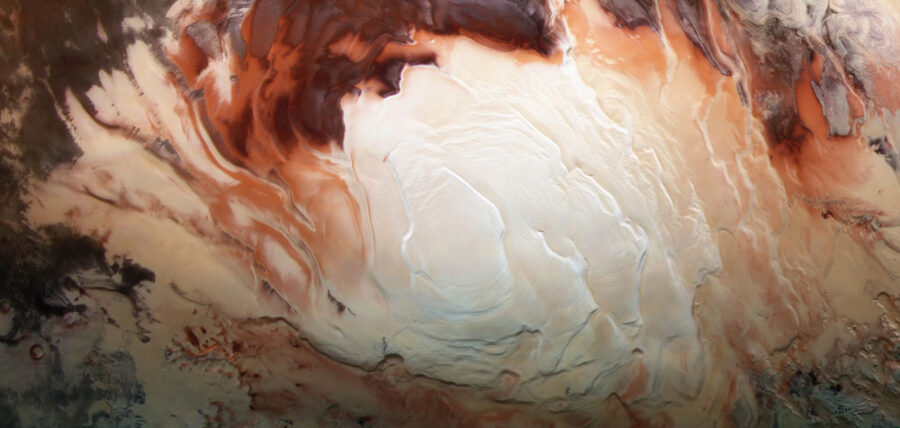
The polar ice cap at the Martian south pole, shown here in a Mars Express image, is one kind of water reservoir that's interacting with the atmosphere on a seasonal basis as water freezes and sublimates over the course of a trip around the Sun.
ESA/DLR/FU Berlin / Bill Dunford
These studies leave a lot of open questions, all of which impact the past and present state of Mars’s surface — and its future habitability for human settlers. The highly variable D/H ratios might indicate how key reservoirs — like the polar ice caps and the ice-rich regolith — influence the climate, and vice versa in the planet’s water cycle, but more information is needed to be sure. And while the observation of a never before-seen-halogen, hydrogen chloride, is important, we also want to know how it is being produced.
“Going forward we need to model the chemistry of the atmosphere,” Olsen says. At the moment no one knows exactly how the hydrogen chloride gas is interacting with other gases and particulates in the air. “Dedicated laboratory studies will also help to show that the predicted chemistry is actually plausible.”
The water team has a similar need for better, more detailed atmospheric models. “The moral of the story is that we have more to learn before we can infer what the true isotopic ratios of the reservoirs are,” Villanueva says.

